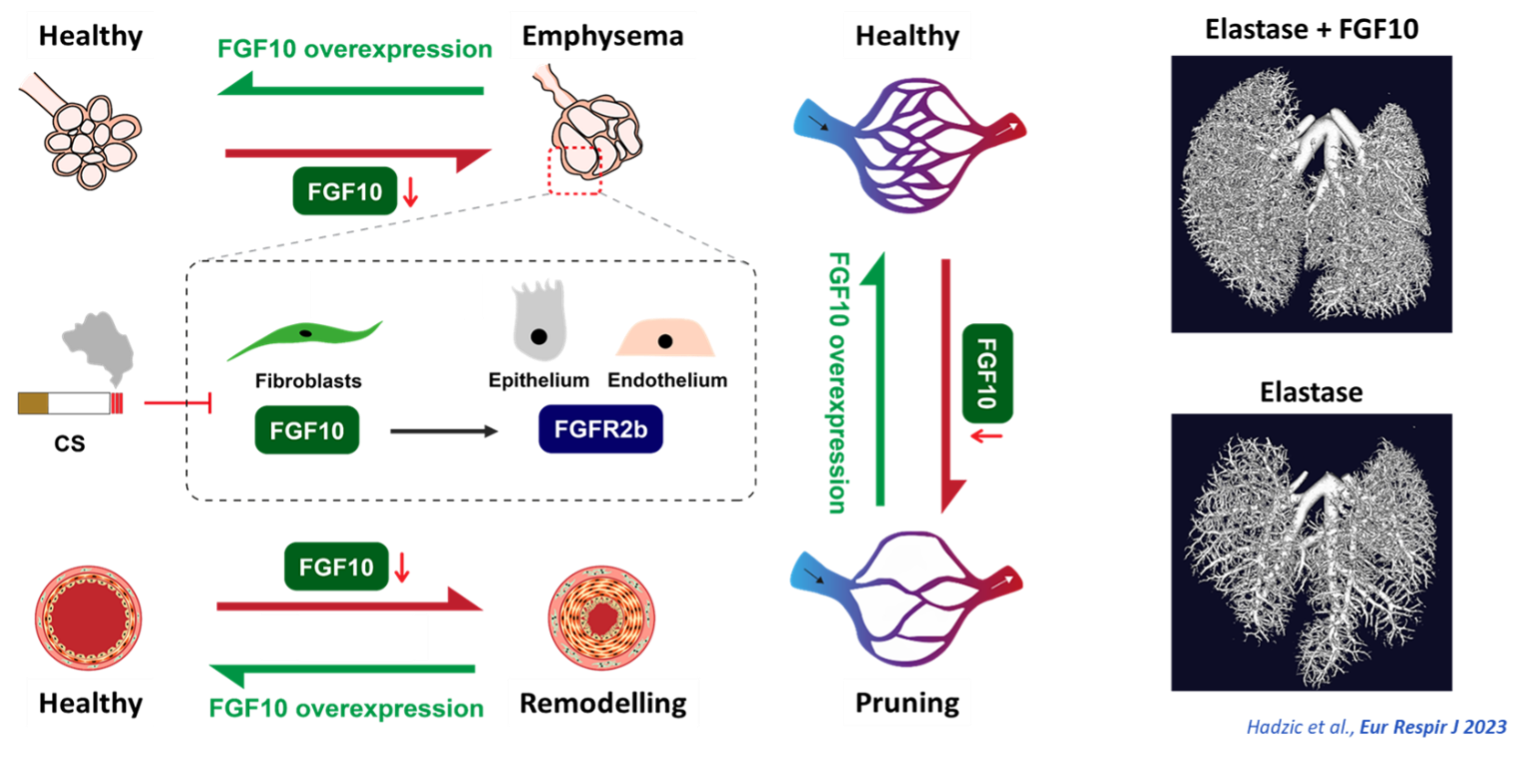December 2023
Eur Respir J
Fibroblast growth factor 10 reverses cigarette smoke- and elastase-induced emphysema and pulmonary hypertension
Hadzic S, Wu C-Y, Gredic M, Pak O, Kraut S, Kojonazarov B, Wilhelm J, Brosien M, Bednorz M, Seimetz M, Gunther A, Kosanovic D, Sommer N, Warburton D, Grimminger F, Ghofrani HA, Schermuly RT, Seeger W, El Agha E, Bellusci S and Weissmann N

After our lungs complete their development in late adolescence, they naturally start to decline in function as we age. This decline is influenced by various factors such as genetics and exposure to harmful substances like gases and particulate matter. These factors contribute to increased stress on our lungs and hinder their ability to repair, speeding up the decline and leading to the development of a condition known as chronic obstructive pulmonary disease (COPD). COPD is characterized by persistent airflow limitation, chronic bronchitis, airway remodelling, and the loss of respiratory surface, which is referred to as pulmonary emphysema. Despite extensive research, COPD remains an incurable disease and a leading global cause of death. Current treatments are not effective in slowing down the progression of the disease or aiding in the repair of damaged lung structures. Ongoing research is focused on understanding the disrupted developmental pathways in COPD that lead to insufficient or abnormal lung repair.
In a recent study published in the European Respiratory Journal, Dr. Hadzic and colleagues investigated the role of a developmental factor called fibroblast growth factor (FGF) 10 in the context of COPD development and lung repair. FGF10 is crucial for lung development, and the study found reduced FGF10 expression in the walls of human lung air sacs and the primary interstitial fibroblasts of COPD-affected lungs. Additionally, when FGF10 signalling was impaired, either due to genetic factors or environmental exposure, it led to the spontaneous development of emphysema, changes in the blood vessels in the lungs, and other features typically associated with smoking. This identified impaired FGF10 signalling as a key part of the mechanism leading to COPD development.
In a therapeutic experiment using preclinical COPD models, treating with FGF10 successfully restored the structures of lung respiratory surface and blood vessels. FGF10 showed a strong effect on the epithelial cells lining the air sacs and endothelial cells in blood vessels, indicating its potential role in repairing adult lungs. Therefore, using recombinant FGF10 or stimulating related signalling pathways holds promise as a new therapeutic strategy for the future.